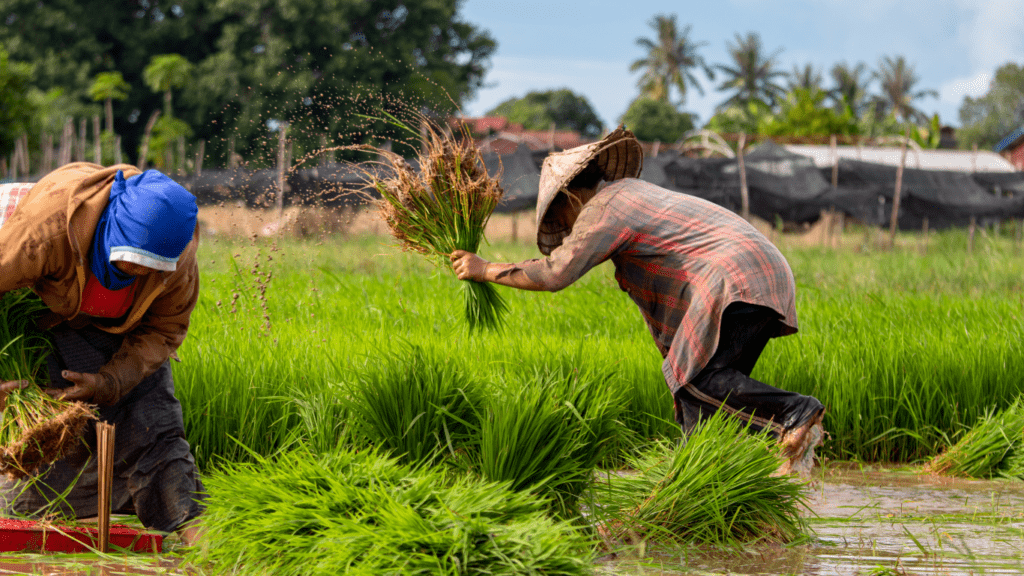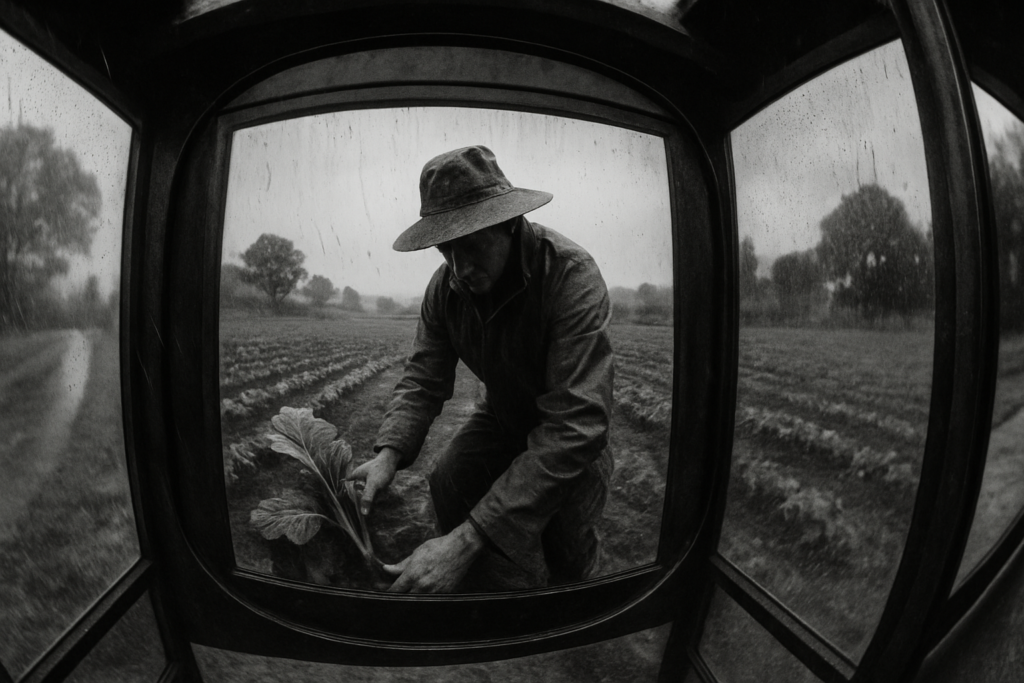Climate change is no longer a distant threat; it’s affecting our world right now. As temperatures rise and weather patterns become unpredictable, traditional crops struggle to survive.
That’s where climate-resilient crops come in. These specially bred or genetically modified plants can withstand extreme conditions, ensuring food security for the future.
I’ve always been fascinated by the intersection of agriculture and technology. Climate-resilient crops represent a groundbreaking advancement in this field.
Understanding Climate-Resilient Crops
Climate-resilient crops play a vital role in sustaining agriculture amid changing climatic conditions. These crops ensure food security by adapting to extreme environments.
Definition and Importance
Climate-resilient crops refer to plants bred or genetically engineered to withstand adverse weather like:
- droughts
- floods
According to the Food and Agriculture Organization, these crops support agricultural productivity in climates that challenge traditional farming methods. They ensure stable yields, essential for feeding a growing population while conserving resources.
Historical Perspective
The concept of climate-resilient crops emerged in response to the Green Revolution in the mid-20th century, which increased crop production through new technologies but didn’t account for climate variations.
For instance, the development of drought-resistant maize in the 1970s highlighted an early shift toward creating hardier crops. The International Maize and Wheat Improvement Center (CIMMYT) played a significant role, showcasing the potential of resilient varieties in vulnerable regions.
Key Traits of Climate-Resilient Crops

Climate-resilient crops possess specific traits that enable them to thrive in extreme weather conditions. These traits ensure sustainable agricultural productivity even when the climate becomes unpredictable.
Drought Tolerance
Drought tolerance is a critical trait for climate-resilient crops. These plants endure water scarcity by maintaining growth with minimal water. Drought-tolerant crops, such as sorghum and millet, manage water efficiently through deeper root systems and reduced transpiration rates. Deeper roots access water from lower soil layers, while reduced transpiration minimizes water loss.
Heat Resistance
Crops with heat resistance survive and produce yields in high temperatures. Heat-resistant varieties like pearl millet and chickpeas have heat-shock proteins that protect cellular structures during elevated temperatures. Increased thermal stability allows these crops to continue photosynthesis and maintain productivity despite prolonged heatwaves.
Flood Resilience
Flood resilience enables crops to withstand periods of waterlogging. Crops like rice and taro develop specialized roots that can exchange gases even underwater. This adaptation prevents root oxygen deprivation and promotes survival during flooding events. Flood-resilient crops also exhibit anaerobic metabolism to cope with low-oxygen environments.
Pest and Disease Resistance
Climate-resilient crops often have enhanced resistance to pests and diseases. Genetic traits in crops like Bt cotton and hybrid tomatoes produce natural insecticides or physical barriers against pests. Disease-resistant varieties contain genes that recognize and combat pathogens, reducing the reliance on chemical control methods and ensuring stable yields in pest-prone regions.
Advances in Crop Breeding
Advances in crop breeding enhance the development of climate-resilient crops. Traditional breeding, genetic engineering, and CRISPR gene editing play crucial roles in this progress.
Traditional Breeding Techniques
Traditional breeding techniques involve selecting parent plants with desired traits for crossbreeding. Breeders identify plants with natural resilience to extreme weather, pests, or diseases and cross them with high-yield varieties.
This process can produce crops that combine resilience and productivity, but it can take several generations to achieve desired results. The Green Revolution exemplifies success, with improved wheat and rice varieties boosting yields globally.
Genetic Engineering
Genetic engineering allows precise insertion of genes, making crops more adaptable to climate stressors. Scientists insert genes responsible for drought tolerance, pest resistance, or other beneficial traits directly into a plant’s DNA. This method speeds up the introduction of resilience traits compared to traditional breeding.
Genetically modified (GM) crops like Bt corn and Roundup Ready soybeans show improved resistance to pests and herbicides, leading to higher yields and reduced chemical use.
CRISPR and Gene Editing
CRISPR and gene editing revolutionize crop breeding by enabling precise, targeted changes to the plant genome. Unlike traditional breeding and genetic engineering, CRISPR allows the alteration of specific gene sequences, enhancing desired traits with high accuracy.
This technology produces climate-resilient crops that withstand drought, pests, and diseases more efficiently. For instance, researchers have used CRISPR to develop rice varieties resistant to bacterial blight and potatoes with reduced bruising and enhanced storage potential.
Advances in these breeding techniques ensure continuous improvement in crop resilience, meeting the demands of a changing global climate.
Economic and Social Impacts
Climate-resilient crops contribute significantly to the economic and social frameworks of agricultural societies. They provide diverse benefits that extend beyond the fields to local and global communities.
Benefits for Farmers
Adopting climate-resilient crops reduces the vulnerability of farmers to extreme weather conditions. Higher yields and lower crop failure rates can stabilize income levels and improve financial security.
For example, drought-tolerant maize can sustain productivity during dry spells, ensuring more consistent outputs. Farmers also incur lower costs due to decreased requirements for pesticides, as pest-resistant crops minimize damage from insects and diseases.
Food Security Implications
Food security improves with the cultivation of climate-resilient crops. These crops ensure stable food supplies by thriving in adverse climatic conditions, which mitigates the risk of food shortages.
Flood-resistant rice varieties, for instance, can survive prolonged waterlogging, thus maintaining rice production levels. By securing food availability, these crops also help stabilize food prices, contributing to economic stability and reducing hunger in vulnerable populations.
Challenges and Concerns
Despite the benefits, several challenges and concerns exist. High initial costs hinder small-scale farmers from adopting these crops. Additionally, skepticism over genetically modified organisms (GMOs) may limit acceptance.
There’s also the need for adequate training and resources to ensure successful implementation. Ensuring equitable access and addressing ethical concerns remain critical to leveraging the full potential of climate-resilient crops.
Real-World Examples
Success Stories
Climate-resilient crops have shown promising results globally. In India, drought-tolerant rice varieties (e.g., Sahbhagi Dhan) helped farmers maintain yields during droughts. These crops reduce economic losses and ensure food production even in dry spells. In Africa, heat-tolerant maize varieties (e.g., DKC777) have become essential. Their ability to withstand high temperatures has improved maize productivity, essential for food security in the region.
Additionally, Australia’s wheat farmers have benefited from salt-tolerant wheat varieties (e.g., Janz). This innovation has allowed cultivation in saline soils, increasing the arable land area and boosting wheat production in challenging environments.
Ongoing Research
Research on climate-resilient crops is ongoing worldwide. In the US, scientists are developing flood-tolerant soybean varieties. These crops aim to withstand prolonged waterlogging, an increasing issue due to changing precipitation patterns. In China, researchers focus on developing heat-tolerant rice. This effort aims to sustain rice yields as temperatures rise.
In Latin America, research on pest-resistant cassava varieties is underway. These crops target regions where changing climates have increased pest populations, ensuring food security and reducing pesticide dependence.
Ongoing research efforts aim to enhance existing crops and develop new ones, addressing the diverse challenges posed by climate change.
Future Prospects
Future prospects for climate-resilient crops look promising due to ongoing research and innovation.
Technological Innovations
Research constantly introduces technological innovations in climate-resilient crop development.
- Genomics, phenomics, and synthetic biology help scientists identify and manipulate crop traits.
- Phenomics, for instance, assesses crop responses to environmental stress through high-throughput screening. This approach enables precise trait selection for resilience.
- Artificial Intelligence (AI) and machine learning forecast environmental changes and model crop performance.
- Leveraging AI aids in predicting drought impacts or pest outbreaks, ensuring timely interventions.
- The integration of big data analytics supports decision-making regarding crop management, improving resilience under climate stress.
Policy and Regulatory Framework
Supportive policy and regulatory frameworks play a critical role in advancing climate-resilient crops. Governments can encourage resilience innovations by providing funding for research and development. Clear regulatory pathways ensure that new varieties are evaluated, approved, and adopted efficiently.
International collaborations streamline the sharing of technology and knowledge. Policies focusing on intellectual property rights protect innovations while promoting accessibility. Additionally, ensuring farmer education and support through policies helps in adopting climate-resilient practices at the grassroots level.



